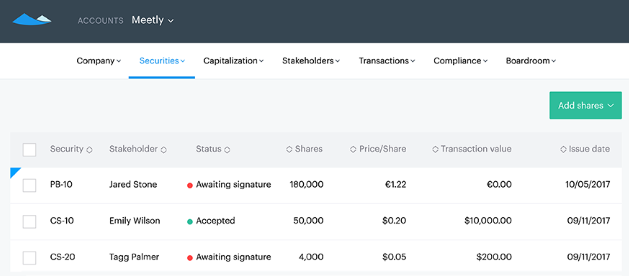Introduction
A capitalization table, or cap table, is a vital tool for startups and investors, providing a comprehensive snapshot of a company's equity ownership, share values, and dilution. Managing a cap table efficiently is crucial for making informed decisions about fundraising, employee compensation, and exit strategies. In this blog, we'll discuss the pros and cons of using Excel for cap table management and explore the benefits of SaaS-based solutions, along with a brief overview of some major vendors in the space.

Excel for Cap Table Management
Using Excel for cap table management is a popular choice among early-stage startups due to its accessibility and ease of use. Some advantages of using Excel include:
- Customization: Excel allows you to tailor your cap table to your specific needs, adding or removing columns and rows as required.
- Cost-effective: Excel is a budget-friendly solution, especially for startups with limited resources.
However, Excel also has some downsides:
- Error-prone: Manual data entry increases the risk of errors, which can lead to inaccurate equity calculations and misinformed decisions.
- Limited scalability: As your company grows, managing a cap table in Excel can become increasingly complex and time-consuming.
SaaS-Based Cap Table Management Solutions
SaaS-based cap table management solutions offer a more robust and efficient alternative to Excel, automating many of the manual processes and reducing the risk of errors. Some advantages of using a SaaS solution include:
- Automation: These platforms automate equity calculations and updates, minimizing the risk of human error and saving time.
- Scalability: SaaS solutions can easily accommodate the changing needs of a growing company, providing a seamless transition as your startup evolves.
- Collaboration: Cloud-based platforms enable secure sharing and collaboration among founders, employees, and investors.
Major Vendors
Here's a brief overview of some popular SaaS-based cap table management vendors and their strengths and weaknesses:
1. Carta
Strengths: Carta is a comprehensive equity management platform with a user-friendly interface, offering tools for cap table management, 409A valuations, and equity plan administration.
Weaknesses: Carta's pricing can be relatively high, especially for smaller startups, and some users have reported occasional slow customer support response times.
2. Capshare (now Shareworks by Morgan Stanley)
Strengths: Capshare provides a robust suite of tools for cap table management, equity plan administration, and scenario modeling. Their customer support is highly responsive, and the platform integrates with other Morgan Stanley services.
Weaknesses: The user interface may be less intuitive compared to some competitors, and pricing can be on the higher side for smaller startups.
3. Eqvista
Strengths: Eqvista is an affordable option for startups, offering cap table management, 409A valuations, and electronic share issuance. It has an intuitive interface and responsive customer support.
Weaknesses: Eqvista may have fewer features compared to Carta or Capshare, making it a more suitable choice for smaller, early-stage startups.
Conclusions
Managing your cap table efficiently is crucial for the success of your startup. While Excel may be a suitable option for early-stage startups with limited resources, SaaS-based solutions offer increased automation, scalability, and collaboration. Carefully evaluate the features, pricing, and usability of different cap table management platforms to select the best solution for your company's needs and growth trajectory.
